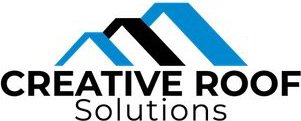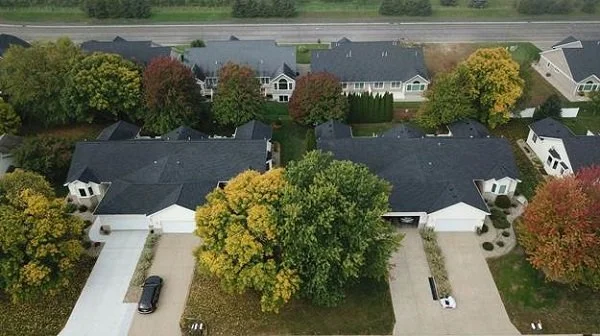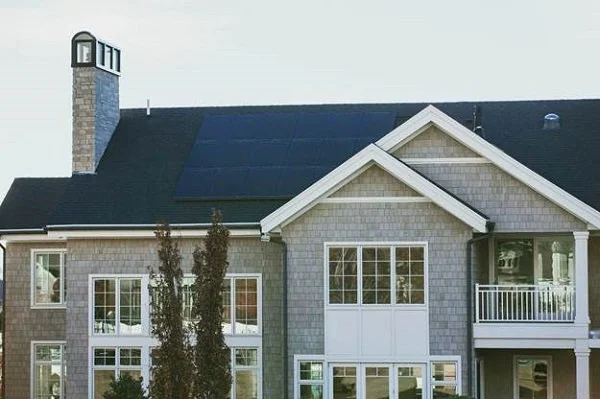Eco-Friendly Roofing in Washington: A Guide
Choosing a new roof is one of the most significant investments you can make in your home. For Washington homeowners, this decision involves more than just aesthetics and cost; it's an opportunity to make a positive environmental impact. With traditional roofing materials contributing significantly to landfill waste, selecting from the growing list of eco-friendly residential roofing options is a forward-thinking choice that aligns financial sense with sustainable values.
This guide is designed for homeowners in Snohomish, Skagit, and King Counties who want to protect their property while reducing their carbon footprint. We will explore the best sustainable roofing materials for the Pacific Northwest climate, analyze their costs and benefits, and outline the financial incentives available to you.
Table of Contents
What Defines an Eco-Friendly Roof?
Top Sustainable Roofing Materials for Washington Homes
Metal Roofing: Durable and Recyclable
Solar Roofs: Powering Your Home's Future
Green Roofs: A Living Layer of Protection
Recycled Composite Shingles: The Innovative Choice
Classic Materials: Clay, Slate, and Wood
Cost vs. Lifespan: A Washington Homeowner's Comparison
How to Select the Right Sustainable Roof for Your Property
Frequently Asked Questions (FAQs)
Your Partner in Sustainable Roofing
What Defines an Eco-Friendly Roof?
A roof earns the "eco-friendly" label by meeting specific criteria that extend beyond its initial installation. For Washington homeowners, the key characteristics are material sustainability, energy efficiency, and longevity, all considered within the context of our unique Pacific Northwest climate.
Sustainable Materials: The composition of the roofing material is paramount. This includes the use of recycled content, the ability of the material to be recycled at the end of its life, and whether it is sourced from renewable resources.
Energy Efficiency: An eco-friendly roof helps maintain your home's internal temperature, reducing the load on your HVAC system. Features like solar reflectance (cool roofs) keep homes cooler in the summer, while materials with high insulative properties retain heat during our cooler, wet winters.
Longevity and Durability: The longer a roof lasts, the less waste is generated over time. A truly sustainable roof must be durable enough to withstand the persistent rain, wind, and potential moss growth characteristic of the Puget Sound region.
Top Sustainable Roofing Materials for Washington Homes
Understanding your options is the first step toward making an informed decision. Here is a breakdown of the leading eco-friendly roofing materials suited for Washington State homes.
Metal Roofing: Durable and Recyclable
Once primarily for commercial buildings, metal roofing has become a premier choice for residential properties due to its exceptional durability and sustainability.
Pros:
Longevity: Metal roofs can last 40 to 60 years or more, outliving conventional asphalt shingles by decades (Orca Roofing).
Recyclability: They are typically made with 25-95% recycled content and are 100% recyclable at the end of their service life.
Weather Resistance: Metal systems are excellent at shedding rain and snow and are highly resistant to wind and fire.
Cons:
Initial Cost: The upfront investment is higher than for traditional shingles.
Noise: Rain can be louder on metal roofs, though modern installation techniques and insulation can greatly reduce this.
Best for Washington: Its superior ability to handle heavy rainfall and its resistance to moss and algae make metal an ideal choice for the Pacific Northwest.
Solar Roofs: Powering Your Home's Future
Solar solutions represent the pinnacle of energy-efficient roofing, turning your home's largest exposed surface into an asset that generates clean power.
Pros:
Energy Savings: A solar roof can drastically reduce or even eliminate your monthly electricity bills.
Financial Incentives: Homeowners can benefit from a 30% federal tax credit. Furthermore, Washington State offers a sales tax exemption for qualifying solar installations through 2029 (MAD Energy NW).
Improved Property Value: Homes with solar installations are highly attractive to buyers.
Cons:
High Initial Cost: A full solar roof system can cost between $25,000 and $60,000 before incentives (EcoWatch).
Sunlight Dependency: Performance is dependent on sun exposure, a key consideration in our often-overcast region.
Best for Washington: Despite the clouds, modern solar panels are highly efficient and can generate substantial power. They are perfect for the environmentally conscious homeowner focused on long-term energy independence.
Green Roofs: A Living Layer of Protection
Also known as living roofs, green roofs involve growing vegetation on a specialized waterproof membrane. They are a bold statement in sustainable design.
Pros:
Superior Insulation: A layer of soil and plants provides exceptional thermal and sound insulation.
Stormwater Management: They absorb a significant amount of rainwater, reducing runoff into local water systems. In Seattle, 41% of the city's green roof area comes from rooftop gardens (Seattle.gov).
Extended Roof Lifespan: The vegetation protects the underlying roof membrane from UV radiation and temperature extremes.
Cons:
Structural Requirements: The home must be able to support the considerable weight of soil, plants, and retained water.
Maintenance: A green roof is a garden and requires ongoing care like weeding and irrigation.
Best for Washington: Their ability to manage stormwater is a massive benefit in our rainy climate, making them an excellent, albeit specialized, option.
Recycled Composite Shingles: The Innovative Choice
For those who prefer a traditional look, shingle roofing made from recycled materials offers a sustainable alternative. These products are manufactured from post-consumer waste like rubber tires, plastic, and even reclaimed asphalt.
Pros:
Waste Reduction: Diverts a substantial amount of material from landfills.
Durability: Many composite shingles are engineered to be more durable and impact-resistant than their virgin-material counterparts.
Climate Suitability: They often include additives that inhibit algae and moss growth, a common problem for Washington roofs (Idaho ARI).
Cons:
Variable Quality: Quality and performance can differ significantly between manufacturers. It is critical to choose a reputable brand.
Best for Washington: A practical and cost-effective sustainable choice that directly addresses the challenges of our damp climate.
Classic Materials: Clay, Slate, and Wood
These traditional materials have been used for centuries and have inherent green qualities. Clay and slate are natural, incredibly long-lasting materials, while wood shingles are biodegradable. However, their weight (clay/slate) and high maintenance/fire risk (wood) make them less common choices for modern sustainable projects in our region compared to metal or composites.
Cost vs. Lifespan: A Washington Homeowner's Comparison
Choosing an eco-friendly roof is a long-term investment. This table provides an estimated comparison to help you assess the lifetime value of each option.
| Roofing Material | Estimated Initial Cost (per sq. ft.) | Estimated Lifespan (Years) | Key Sustainable Benefit |
|---|---|---|---|
| Metal Roofing | $9 - $20+ | 40 - 60+ | High recyclability, supreme durability |
| Solar Roof | $21 - $25+ | 25 - 30 | Clean energy generation |
| Green Roof | $15 - $30+ | 40 - 50+ | Stormwater management, insulation |
| Recycled Composite | $8 - $15 | 30 - 50 | Use of post-consumer waste |
| Asphalt Shingles | $5 - $10 | 15 - 25 | Lower upfront cost (baseline) |
Note: Costs are estimates and can vary based on project complexity, location, and material quality.
How to Select the Right Sustainable Roof for Your Property
With a clear understanding of your options, making the final choice comes down to balancing your priorities. Use this checklist to guide your decision:
Define Your Budget: Determine your comfortable investment range, considering both the upfront cost and the long-term savings from energy efficiency and longevity.
Assess Your Home's Style: Which material best complements your home's architectural design? Metal offers a modern look, while composites can mimic traditional shingles or slate.
Evaluate Your Sustainability Goals: Is your primary goal to reduce energy bills (solar), minimize waste (recycled composite), or achieve maximum durability (metal)?
Choose a Qualified Contractor: Partnering with an experienced, local roofing company is the most critical step. A contractor with expertise in sustainable residential roofing will ensure proper installation, which is vital for the performance and lifespan of any roofing system. Ask for proof of licensing, insurance, and examples of their work in Snohomish, Skagit, or King County.
Frequently Asked Questions (FAQs)
Q: What is the most durable eco-friendly roofing material for Washington?
A: Metal roofing is widely considered one of the most durable options for the Pacific Northwest. Its resistance to rain, wind, and moss, combined with a lifespan of up to 60 years, makes it an excellent long-term investment.
Q: Are there state tax credits for sustainable roofing in Washington?
A: While general roofing material does not have a specific credit, Washington State does offer a full sales tax exemption for the purchase and installation of qualifying solar energy systems, including solar shingles. This, combined with the 30% federal tax credit, makes solar installation a very attractive financial option.
Q: How does a cool roof benefit a Pacific Northwest home?
A: A cool roof is designed with highly reflective materials that bounce sunlight and heat away from your home. Even in our milder climate, this reduces heat absorption during summer months, keeping your home more comfortable and lowering the need for air conditioning. Many modern metal and composite roofing products have cool roof properties.
Your Partner in Sustainable Roofing
Choosing an eco-friendly roof is a decision that benefits both your home and the community. It represents a commitment to quality, durability, and a healthier environment for generations to come. As a family-owned business rooted in the values of honesty and safety, Creative Roof Solutions is dedicated to helping homeowners find the perfect sustainable roofing solution.
If you are ready to explore high-quality, long-lasting, and eco-friendly roofing for your home in Snohomish, Skagit, or King County, our experienced team is here to help.
Contact Creative Roof Solutions today for a free, no-obligation consultation and start building a more sustainable future for your home.




